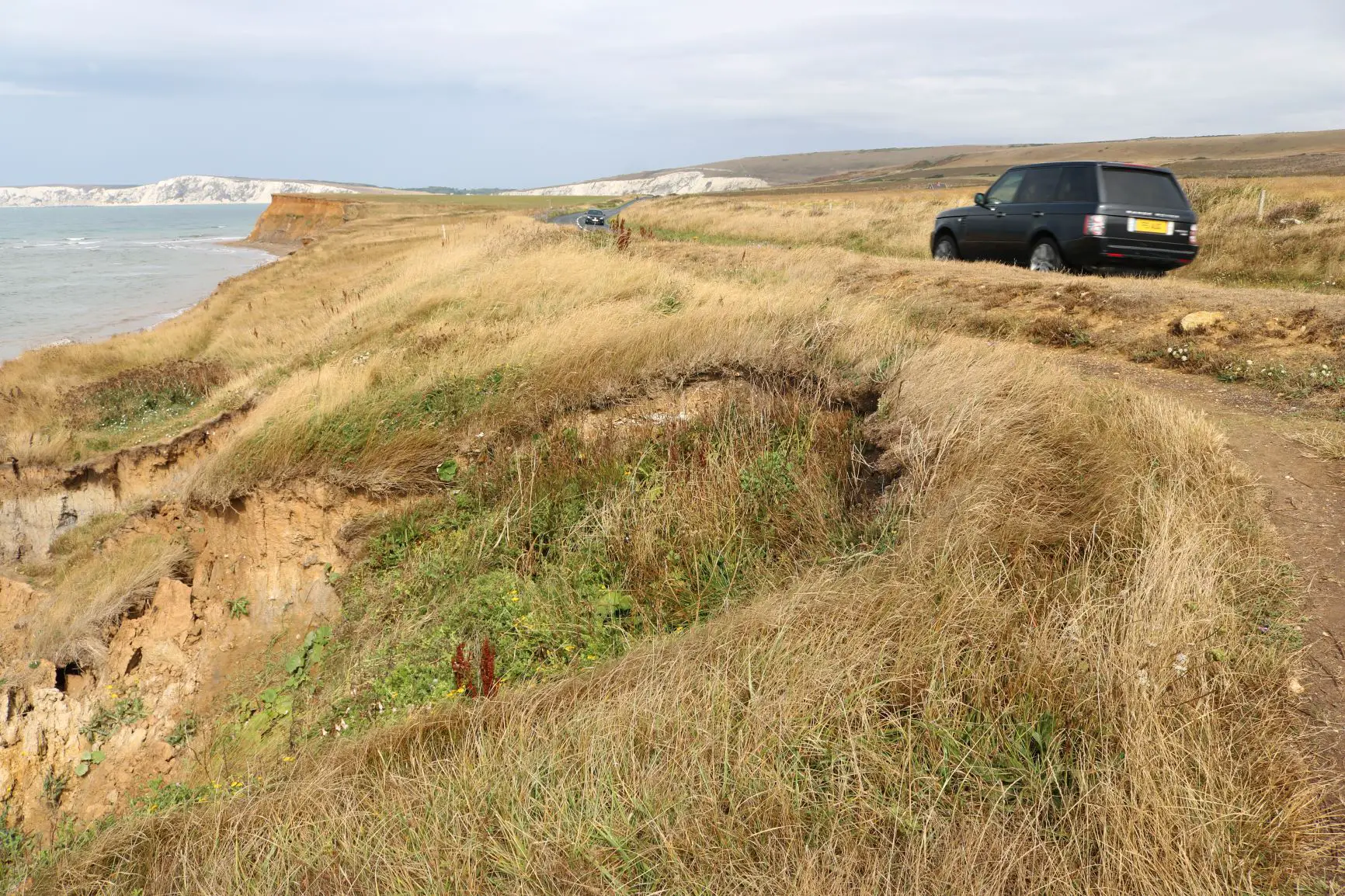Plans for an engineering scheme to prolong the life of an erosion-threatened section of the Military Road at Brook have been submitted by Island Roads.
The proposal, submitted to the Isle of Wight Council, seeks to protect a 25-metre section of the Military Road that, due to ongoing erosion, is now just metres from the cliff edge.
Unobtrusive solution
The solution proposed by Island Roads would not only extend the life of the section, it would do so in a way that is visually unobtrusive, give due regard to environmental considerations and which would allow natural erosion processes to continue.
As such, an Environmental Statement has been submitted as part of the planning process.
Piles not visible for up to ten years
In simple terms, the plan is to install piles under the south side of the carriageway to isolate the road from ongoing coastal erosion. The piles would be buried so would not initially be seen from either ground level or from the beach/sea below.
It is anticipated that it would be between five and ten years before the piles becomes visible from the beach as a result of erosion.
Consideration of environmental designations
Island Roads believes the solution is compatible with various environmental designations that protect the location; an Area of Outstanding Natural Beauty, a Site of Special Scientific Interest and a Special Area of Conservation.
At the same time the scheme will extend the life of the road therefore preserving this important transport link for residents and visitors, between the south and west of the Island.
Geologically vulnerable
The site is one of many defined in the Highways PFI contract as needing an engineering solution to protect the carriageway at geologically vulnerable locations.
Such schemes already delivered include Bouldnor Road at Yarmouth and at Newport Road (The Graben) in Ventnor.
Ashman: Protecting this section in a fully sustainable way.
Steve Ashman, Island Roads service director said:
“The challenge of the Brook scheme has been to devise an engineering solution that prolongs the life of this important section of the Island’s infrastructure but does so in a way that respects the unique environmental and geological characteristics of the site.
“We have looked at several solutions and the advantages and disadvantages of each, and we believe the current project is the best option in terms of protecting the section in a fully sustainable way.”
It is hoped that, subject to planning permission being granted, work on the eight-week project could begin in October, outside the main holiday season.
News shared by Gavin on behalf of Island Roads. Ed





